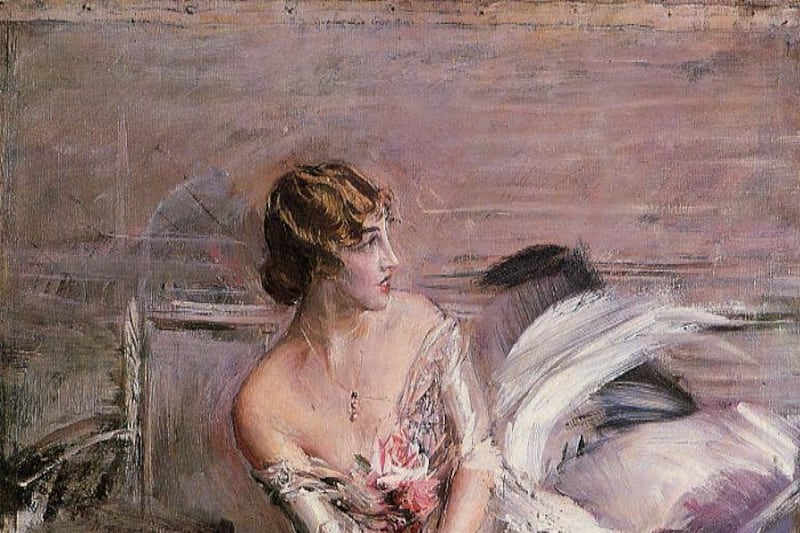Cycling through the city centre one night a few weeks ago, I stopped at a red light (honestly!) and noticed a familiar figure just ahead, also on a Dublin Bike. “Is that Bridget Hourican?” I asked the figure. Sure enough, it was.
During our brief chat, she mentioned she’d be sending me a copy of her new book shortly. “What’s it about?” I asked.
And when she said “James Clarence Mangan”, I trawled my memory for a ready quotation from the poet, the way people always say “Stony Grey Soil” whenever Patrick Kavanagh comes up in conversation.
But sad to say, I couldn’t think any, probably because the man once considered Ireland’s “National Poet” had dropped off the curriculum by the years I went to school.
The woman who enchanted Proust – Frank McNally on the rise and fall of Gladys Marlborough
‘He never said that’: Frank McNally is tired of hearing a phantom WB Yeats quote
Fighting Farney – Frank McNally on the battle for his hometown’s ‘western front’
Monumental misstep: Frank McNally on the ‘tragedy’ of a great Irish sculptor, John Hughes
So later that night, I found myself reading “A Vision of Connacht in the 13th Century” for the first time.
Which proved useful soon afterwards when, in the midst of a deadline panic one afternoon, I had to compile “A History of Ireland in 100 journeys” (Diary, August 16th).
Providing a welcome bridge between the early and late medieval periods, “I walked entranced through a land of morn” was a surprise entry at No. 7.
***
The circumstances of my belated discovery of Mangan pale alongside those of Bridget’s. As related in the book, hers happened during a 2008 lock-in a Liberties pub, in the company of Shane MacGowan, and involved mind-altering substances stronger than poetry.
A book MacGowan and others had been reading from that night somehow ended up in her possession. And when she woke “20 hours later”, she was experiencing both an MDMA hangover and the beginnings of a Mangan habit:
“I had throbbing through my mind like one of those insistent refrains from a dream ‘A Vision of Connacht in the 13th Century’, and I saw myself squinting at a page of Shane’s book trying to read this Mangan poem, which Shane had said was his favourite, but finding that the print was jumping around because of the MDMA and because I had only one contact lens in ...”
***
I’m reminded that the same poem was also, a century ago, the subject of a life-changing epiphany for Patrick Kavanagh.
One day in school, as recorded in The Green Fool and later summarised by his biographer Antoinette Quinn [here quoted]: “he overheard a girl in the next room reading the opening stanza of [JCM’s] ‘A Vision of Connacht in the 13th Century’.
“The words, spoken in the first person, and seeming unmediated by any book, cast a spell, miraculously shedding a visionary light on what was for the country boy a familiar spectacle of cornfields bathed in morning sun ...”
Quinn concludes: “A Mucker child, who could not speak to anyone of his strange liking for lilacs in a dark grate, or the Easter sunlight dancing on watery fields, suddenly found his private feelings shared and articulated.”
Kavanagh grew up not only to succeed Mangan as the National Poet for a time, but also to follow his footsteps as the most recognisable one on the streets of Dublin, if never as sartorially spectacular.
Mangan was known for, among other things, wearing a cloak, green-tinted glasses, and a steepling hat, like a witch’s. He was a rock star before his time, up to and including the opium addiction that helped prematurely end his life.
***
Bridget’s book never turned up, by the way – or if it did, it got lost in The Irish Times post. I was finally reduced this week to buying it (a fact recorded here only in case my editor wonders why I’m claiming for it in expenses).
But it’s an extraordinary, multilayered, and beautifully written piece of work, justifying the decade-and-a-half-long obsession into which she was pitched that night in McGruder’s pub.
The book is in part a reflection on the nature – unreliable, mostly – of biography. It’s also a kind of ghost story, characterised by the many absences in Mangan’s life and his fleeting appearances since, including the ways in which he haunts the author.
But it’s also a real-life love story. Hence the other epiphany in the book, which gave this reader a certain frisson: “And then I met Frank.”
No, it wasn’t me. She meant Frank Callanan – senior counsel, Parnellite historian, Joyce scholar, and from 2011 onwards, the love of her life.
Before his sudden and much-lamented death in 2021, Callanan too was a sort of Dublin street character, a well-known sight cycling around the city, in purple socks, with precariously dangled shopping bags.
He couldn’t quote a line of Mangan either, it turns out. But he knew Joyce loved the poet and that Mangan’s “subtle” nationalism haunted Irish history, especially the Parnellite period.
So he approved Hourican’s choice in what was at first supposed to be a short biography for an academic press, then – like the new relationship – turned into something much deeper. “If I had consciously sought a subject to bind me to Frank,” the author writes, “I could not have chosen better.”
















